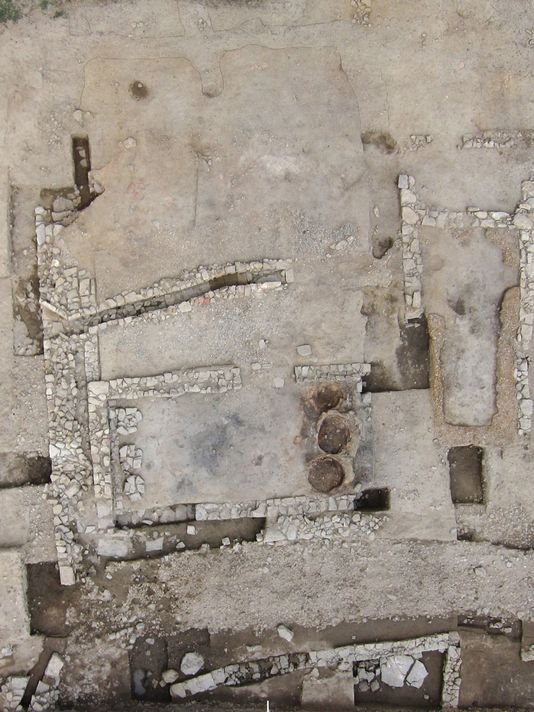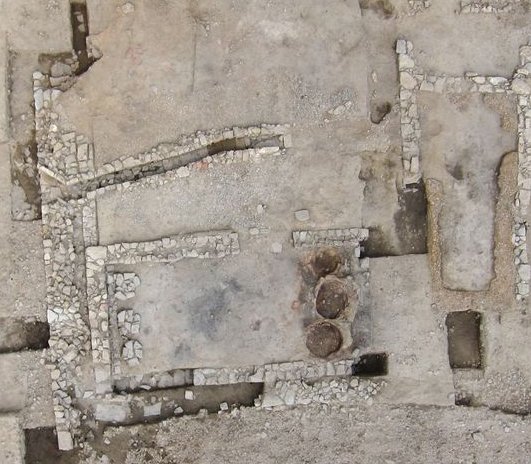MessageToEagle.com – Archaeologists in France have unearthed what could be a 2,100-year-old restaurant. This ancient Roman tavern was discovered in present-day Lattes on the southern coast of France.
According to the tavern’s discoverers, Lattara’s people were farmers before the Romans marched in; after the Roman takeover, new kinds of jobs likely arose – and so did dining out.
“If you’re not growing your own food, where are you going to eat?” says archaeologist Benjamin Luley of Gettysburg College, co-author of a new study in Antiquity describing the site. “The Romans, in a very practical Roman way, had a very practical solution … a tavern.”

(Photo: Lattes excavations)
At first the researchers thought they’d uncovered a bakery. The place had three indoor gristmills and three ovens, which may have been used to bake flatbread. Benches were also discovered lining the walls of a separate area that had a charcoal-burning hearth at the center, suggesting people sat down to eat, rather than taking food to go.
Fish, sheep, and cow bones were found on the site, suggesting a large and varied menu, and archaeologists also found debris from platters and bowls. Other shards of Italian ceramics indicated there may have been wine-drinking vessels on-site
The interpretation of the site as a tavern is “plausible,” says one scholar who was not associated with the research. The Celtic people of Western Europe “were famous (or infamous) in antiquity for their love of wine,” the University of Buffalo’s Stephen Dyson, an expert in Roman archaeology, says via email. The ceramic remains show “they imported the drinking vessels as well as the wine. No guzzling, sotted Celts these.”
Since no coins were found on the site there are also those who think, like for example Roman historian Penny Goodman of Britain’s University of Leeds that the place was not a restaurant but rather a private dining establishment.
She also says there was ample trade and jobs for artisans in the region even before the Roman conquest, so it wasn’t necessarily the Romans’ arrival that spurred demand for a tavern.
Luley responds that before the Romans, Lattara show no evidence of large workshops that needed lots of labor. He also argues that people tend not to lose coins, so the absence of money in the tavern doesn’t mean diners weren’t paying for their meals.
If the place was in fact a tavern, then it is it one of the most ancient taverns in the western Mediterranean.
Source:







